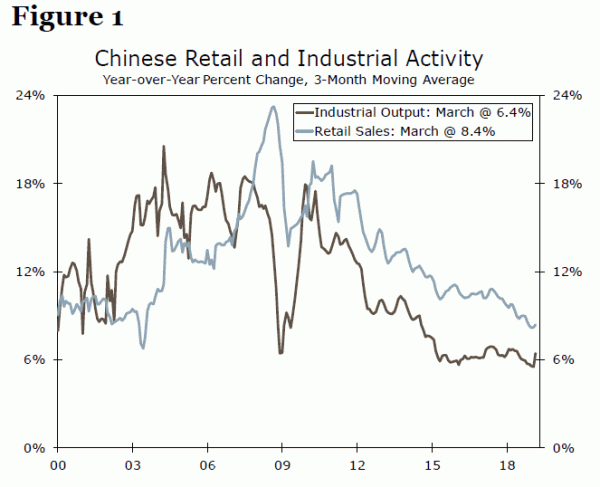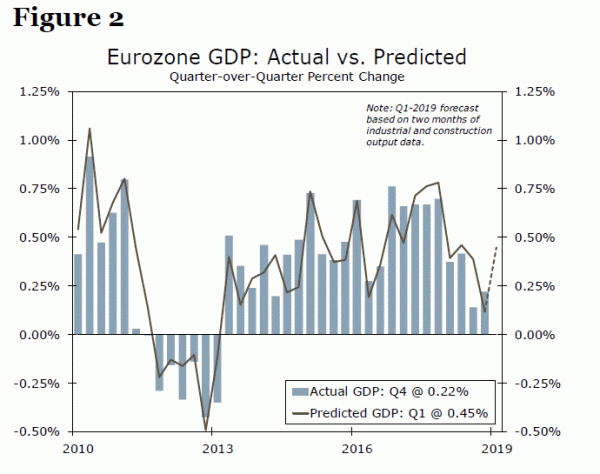Executive Summary
Today’s constructive activity data confirmed the encouraging signs seen from recent Chinese PMI surveys while, for now, Chinese authorities seem unlikely to pullback on current stimulus measures. Early 2019 data also suggest Eurozone Q1 GDP might surprise to the upside, although there is less confidence that strength will be sustained.
Chinese Data Constructive, Eurozone Data Hopeful
Today’s key currency market driver, supporting gains in many risk-sensitive emerging and some G10 currencies, has been a constructive batch of Chinese economic data. China’s Q1 GDP surprised to the upside, holding steady at 6.4% year-over-year, while there were also indications the first quarter ended on a relatively solid note. March retail sales firmed to 8.7% year-over-year, services production firmed to 7.6% year-over-year and industrial output firmed to 8.5% year-over-year (Figure 1). These activity data reinforce the message from China’s March PMI surveys, which were encouraging in tone.
Of course, one swallow does not make a summer and one month does not make a trend, and market participants will be monitoring to see whether the strength in China’s March data flows over into the coming months as well. Meanwhile, although an improvement in growth could eventually see Chinese authorities pull back on their monetary and fiscal stimulus, it appears unlikely for now. In fact, also among today’s headlines were reports that China is considering measures to boost sales of cars and electronics, while China’s State Council announced measures to lower the cost and increase the availability of credit to small companies. Finally, another potential positive on the policy front would be a resolution of trade tensions between the United States and China—recent media reports suggest the two sides are moving closer to an agreement.
While not as compelling as Chinese developments, it is also possible that Eurozone Q1 GDP growth could surprise to the upside. The Eurozone services PMI improved in March, while for January-February, industrial and construction activity are both running above their Q4 level. March did see a sharp slump in the Eurozone manufacturing PMI however, so a decline in March industrial and construction activity is possible and, indeed, probable. That said, using a “nowcast”-type approach with the services PMI as a proxy for services output, and taking into account monthly data on industrial and construction activity, the current estimate points to a 0.45% quarter-over-quarter rise in Eurozone Q1 GDP (Figure 2), suggesting upside risk to the current consensus estimate of 0.2%. Even if Q1 growth is firmer however, there is less confidence on the part of policymakers and market participants that stronger growth will be sustained through 2019. And as in China, any move towards less policy stimulus in the Eurozone still seems some way away.
Tomorrow sees the release of the Eurozone PMI surveys for April. Most focus will be on to what extent the services PMI can sustain its March gain (it is expected to ease to 53.1) and to what extent the manufacturing PMI can bounce back (it is expected to rise to 48.0). Should the Eurozone PMIs meet or beat expectations, it’s possible the constructive market mood could extend further in the near-term.















